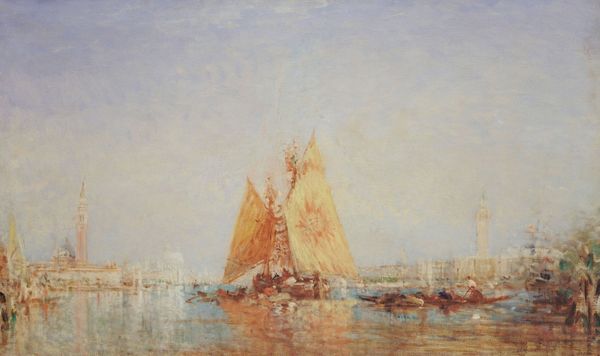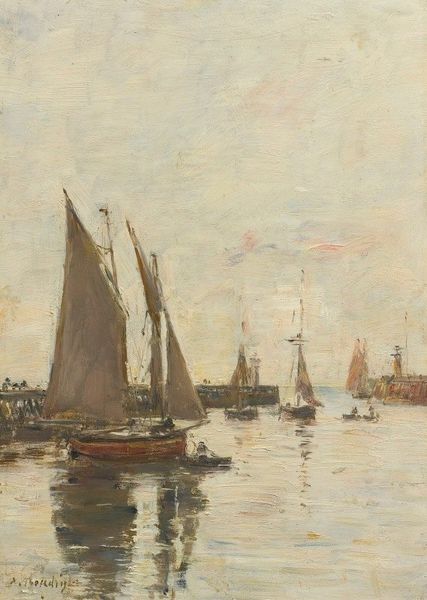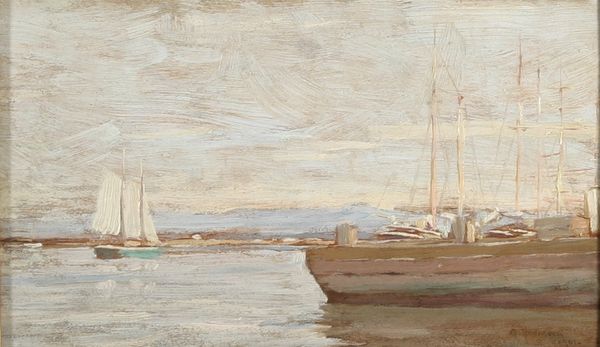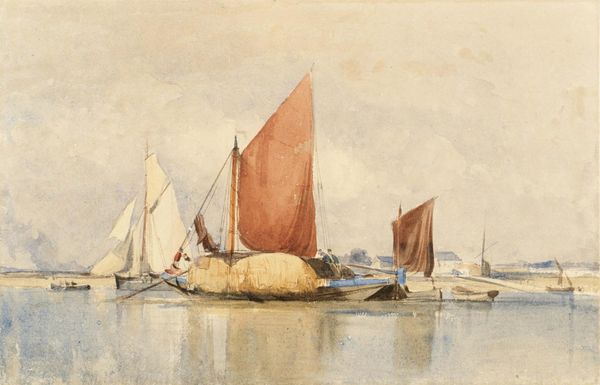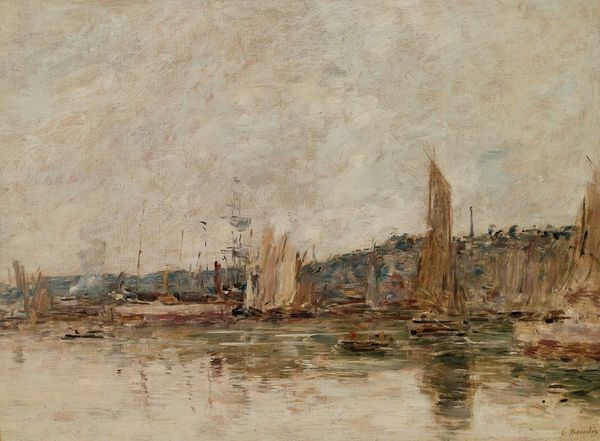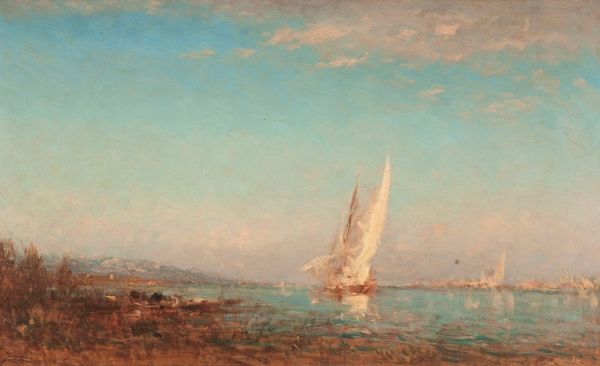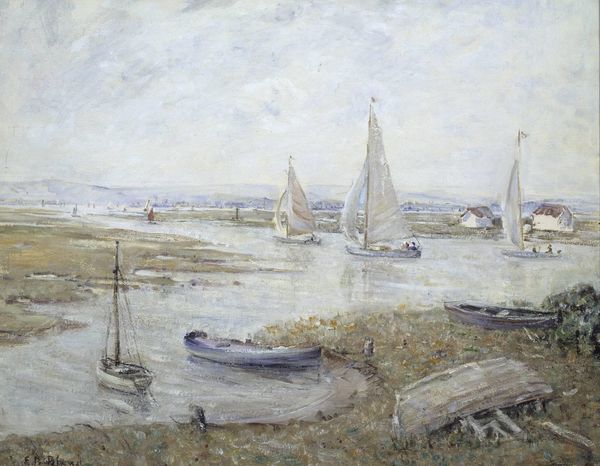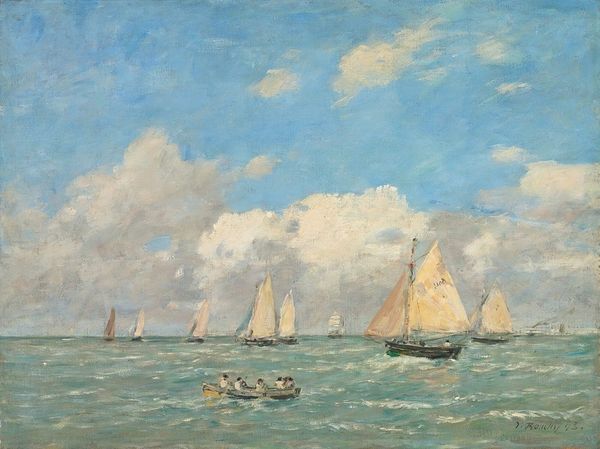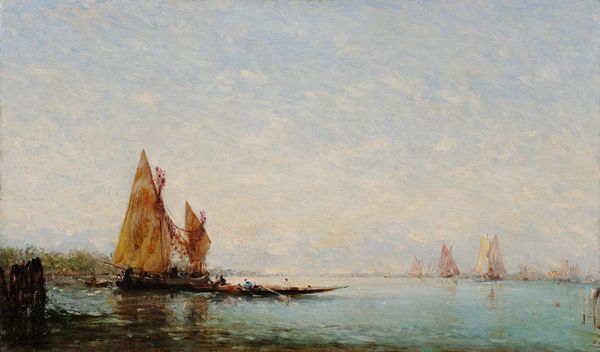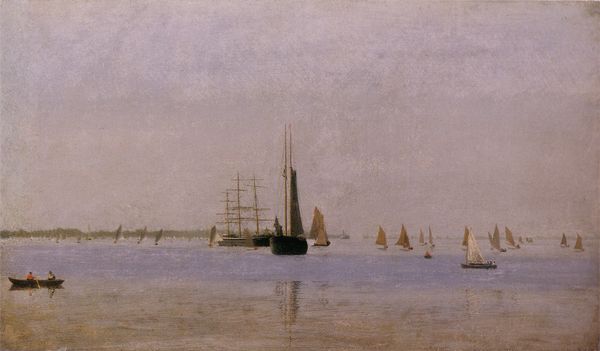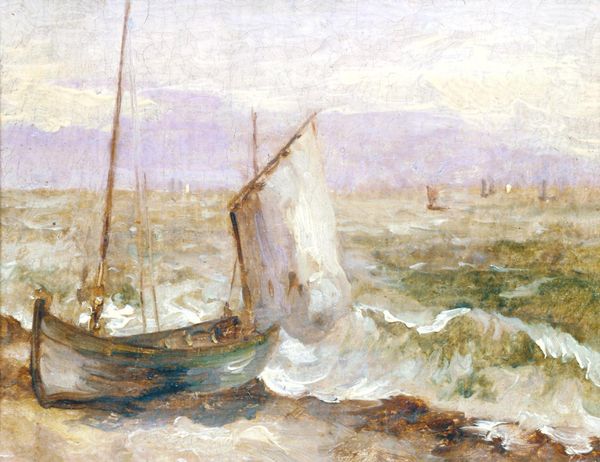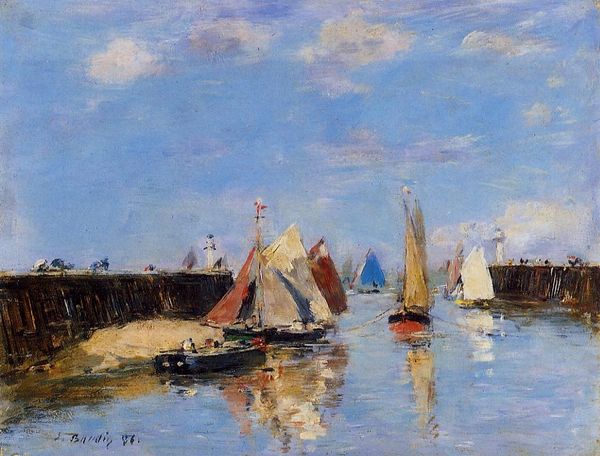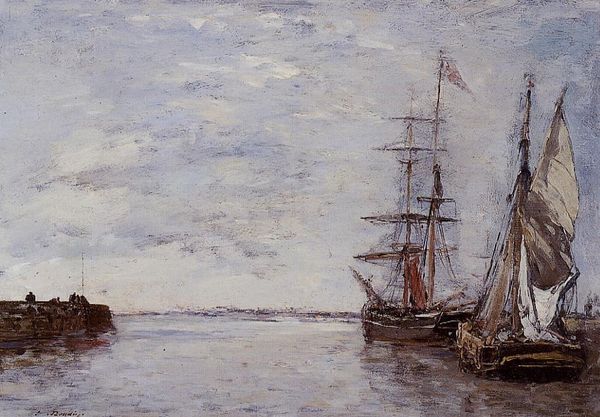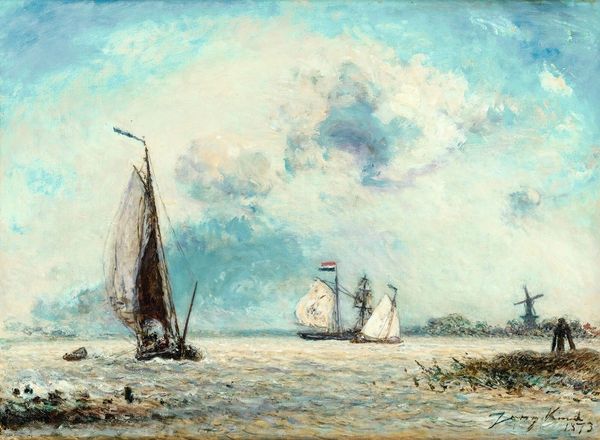
Dimensions: support: 613 x 920 x 23 mm frame: 788 x 1090 x 52 mm
Copyright: CC-BY-NC-ND 4.0 DEED, Photo: Tate
Curator: This is Philip Wilson Steer's "The White Yacht," currently residing in the Tate Collections. It evokes such a tranquil and hazy atmosphere, doesn't it? Editor: It really does. I'm immediately struck by how the light and colour create this sense of ethereal calm. But considering Steer's context, it's perhaps more complex than just simple beauty. Curator: Absolutely. Steer worked within a specific artistic milieu. The late 19th and early 20th centuries saw increasing tensions between aestheticism and social realism. How did Steer's imagery reflect or challenge class structures? Editor: That's a critical question. These yachts, symbols of leisure and privilege, are softened, almost dissolved, by the artistic style. It's as if Steer is acknowledging the social power imbued in these scenes, but simultaneously deconstructing their overt assertiveness. Curator: I agree. The impressionistic brushwork seems to democratize the imagery, softening the sharp edges of class division. It's not a direct critique, but a subtle negotiation of societal tensions through aesthetics. Editor: So, while appearing as a serene seascape, "The White Yacht" speaks volumes about the complex interplay between art, society, and the politics of representation. Curator: Precisely. And that makes engaging with Steer’s work so rewarding.
Comments
Join the conversation
Join millions of artists and users on Artera today and experience the ultimate creative platform.
tate 7 months ago
⋮
Montreuil-sur-Mer is about ten miles inland from Le Touquet (and so is not on the sea), and is the first large French town reached by travellers from Britain going to Paris by the direct road south from Boulogne. Steer had been there in 1889, when he painted two Monet-like pictures, one of poplar trees by the river and another of the town’s old fortifications. In 1907 he returned to spend the summer painting there, after a long interval during which he chose to paint in Britain, when he had gradually developed a style that in colouring and subject was closer to Turner and Constable than to the Impressionists. But that autumn, after his stay at Montreuil, he went on to Paris to see the Cézanne (1839-1906) retrospective exhibition at the Salon d’Automne in October, mounted after his death the previous year. Laughton has suggested that Steer’s wish to go to France in 1907 followed from a renewed interest in the Impressionists. There had been a large group show of the Impressionists in London in January 1905 at the Grafton Galleries, organised by the French dealer Durand Ruel, which included a number of early Cézannes.
